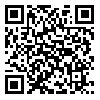Volume 11, Issue 40 (9-2004)
RJMS 2004, 11(40): 247-255 |
Back to browse issues page
Download citation:
BibTeX | RIS | EndNote | Medlars | ProCite | Reference Manager | RefWorks
Send citation to:



BibTeX | RIS | EndNote | Medlars | ProCite | Reference Manager | RefWorks
Send citation to:
Alla-Eddini F, Fatemi R, Ranjbaran Jahromi H, Asghari E, Eskandari S, Ardalan A, et al . Iranian Physicians’ Willingness to Work in Underserved Areas and Related Factors in 2001. RJMS 2004; 11 (40) :247-255
URL: http://rjms.iums.ac.ir/article-1-10-en.html
URL: http://rjms.iums.ac.ir/article-1-10-en.html
F Alla-Eddini * 
 , R Fatemi
, R Fatemi 
 , H Ranjbaran Jahromi
, H Ranjbaran Jahromi 
 , E Asghari
, E Asghari 
 , SH Eskandari
, SH Eskandari 
 , A Ardalan
, A Ardalan 
 , A.R Hosseinpour
, A.R Hosseinpour 
 , H.R Tavakoli
, H.R Tavakoli 
 , A Feiz Zadeh
, A Feiz Zadeh 


 , R Fatemi
, R Fatemi 
 , H Ranjbaran Jahromi
, H Ranjbaran Jahromi 
 , E Asghari
, E Asghari 
 , SH Eskandari
, SH Eskandari 
 , A Ardalan
, A Ardalan 
 , A.R Hosseinpour
, A.R Hosseinpour 
 , H.R Tavakoli
, H.R Tavakoli 
 , A Feiz Zadeh
, A Feiz Zadeh 

Abstract: (10101 Views)
Persuading physicians to work in underserved areas has been a major concern for health policy makers and there are many programs to fulfill this goal. This research has been done to find the inclination of Iranian physicians to work in underserved areas. This mail survey study was conducted on a random sample including 5482 physicians whose particulars had been registered at Medical Association of Islamic Republic of Iran. A questionnaire including items on employment and unemployment quality and some related factors was filled and the final analysis was done on the 2789 returned questionnaires. Based on the obtained results, there were 1965 physicians(74.1%, 95% Confidence Interval: 70.8%-77.4%) who declared that they would work in the underserved areas without any special condition or under some special conditions, mainly their income concerns(83.0%) and their employment relationship status(50.3%). Male gender(78.2% vs. 64.2% in females), lower age(36.9 vs. 41.9 mean age in non-inclined ones), and being single(79.8% vs. 72.8 in married ones), having fewer offsprings(1.4 vs. 1.7 in non-inclined ones), and matriculation in 1986 and afterwards all were correlated with this inclination. In a logistics model, gender, age, matriculation cohort, and the interaction term between age and gender were the determinants of inclination to work in underserved areas. About three-fourths of Iranian physicians would work in underserved areas if there were some special privileges for them, mainly income and employment relationship. Younger males and those who belonged to the Medical Student Boom Generations had more inclination.
Type of Study: Research |
Subject:
Community Medicine



